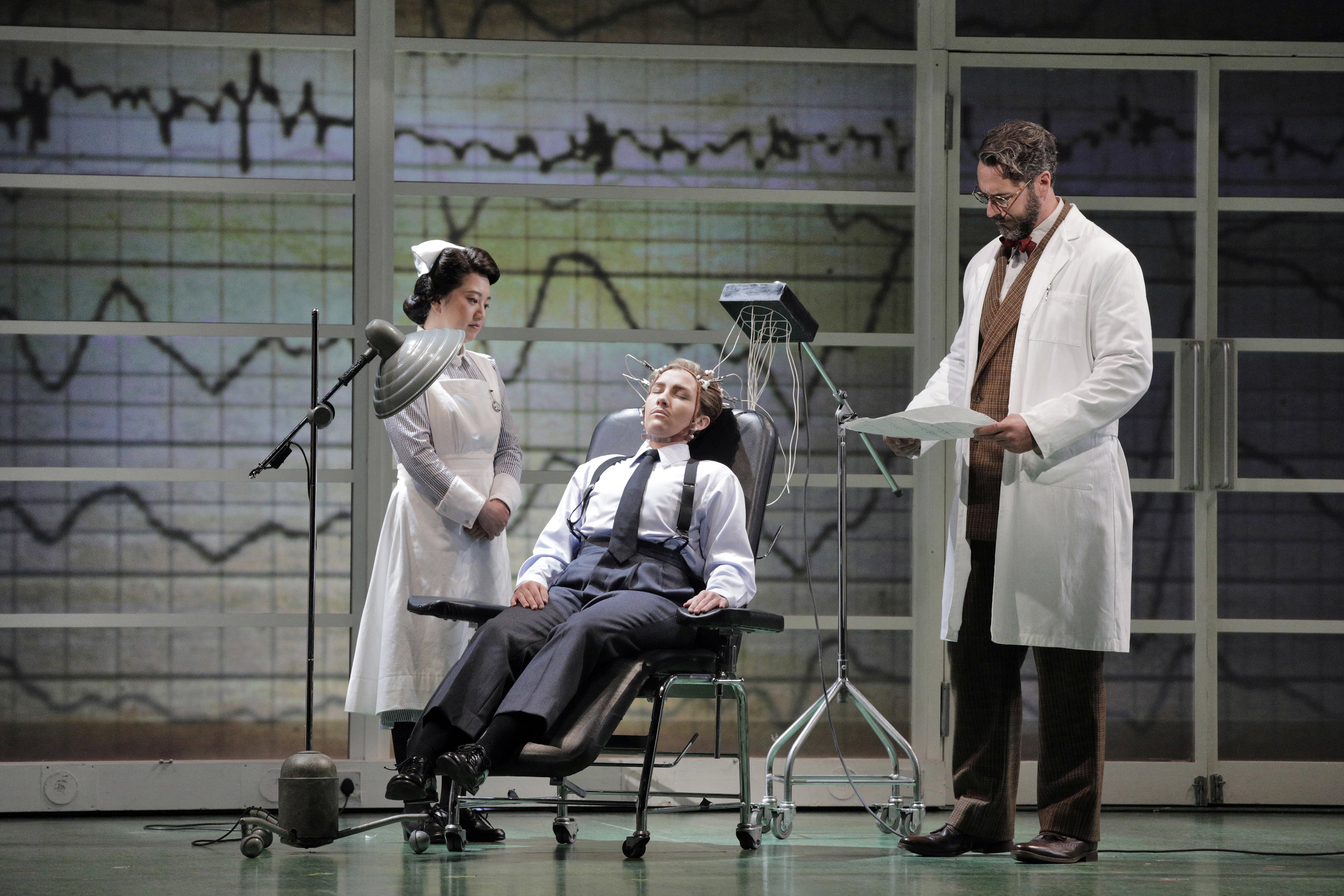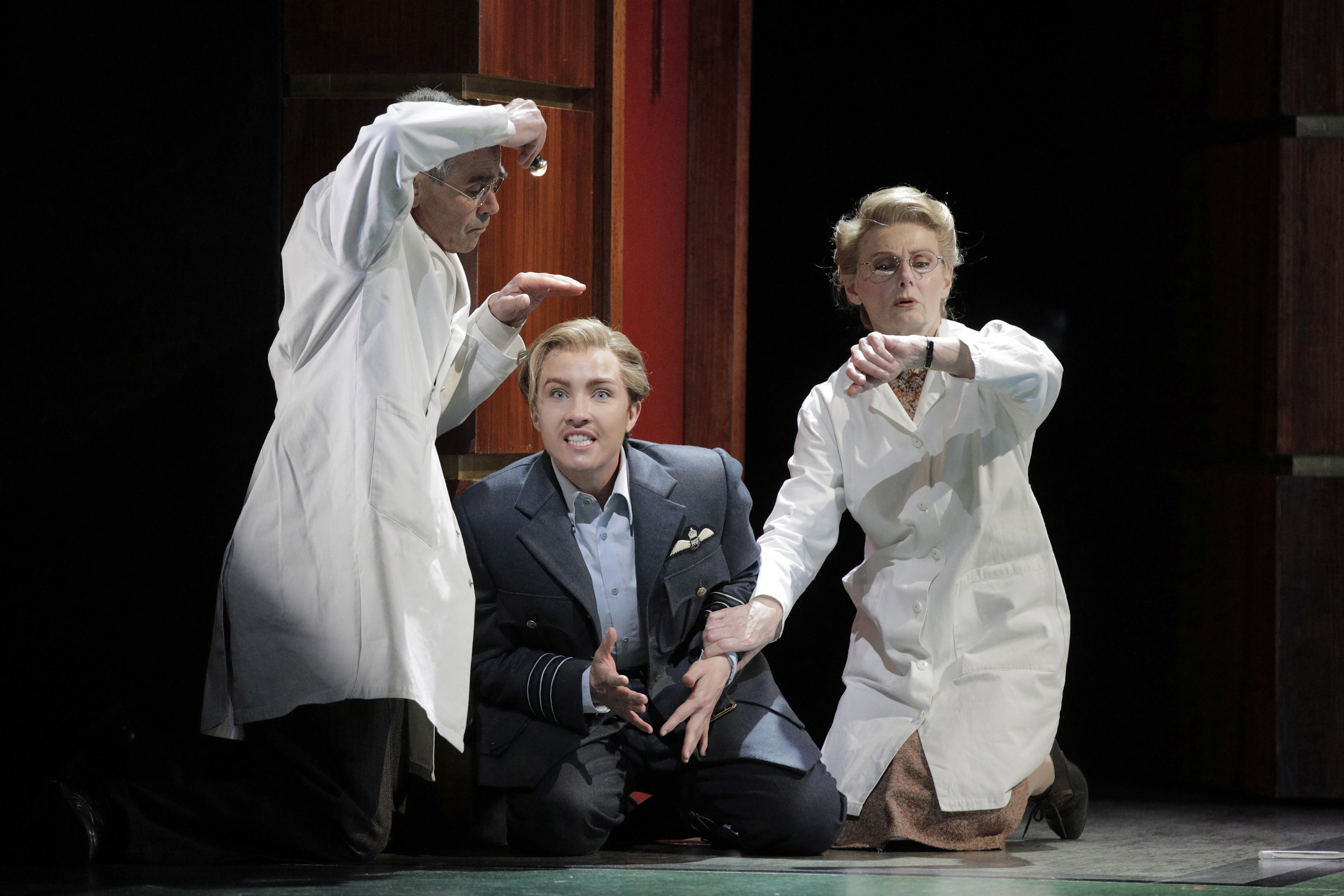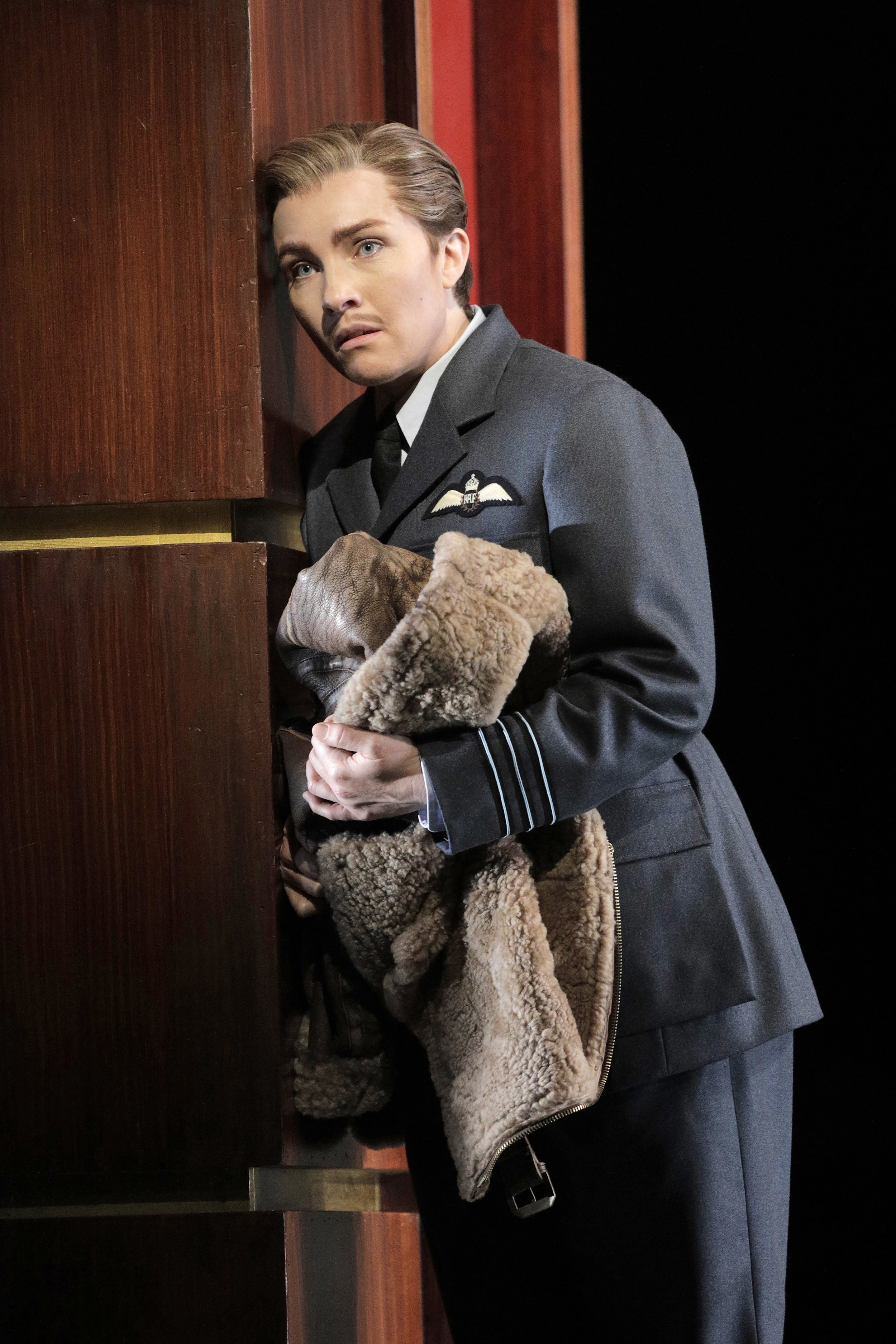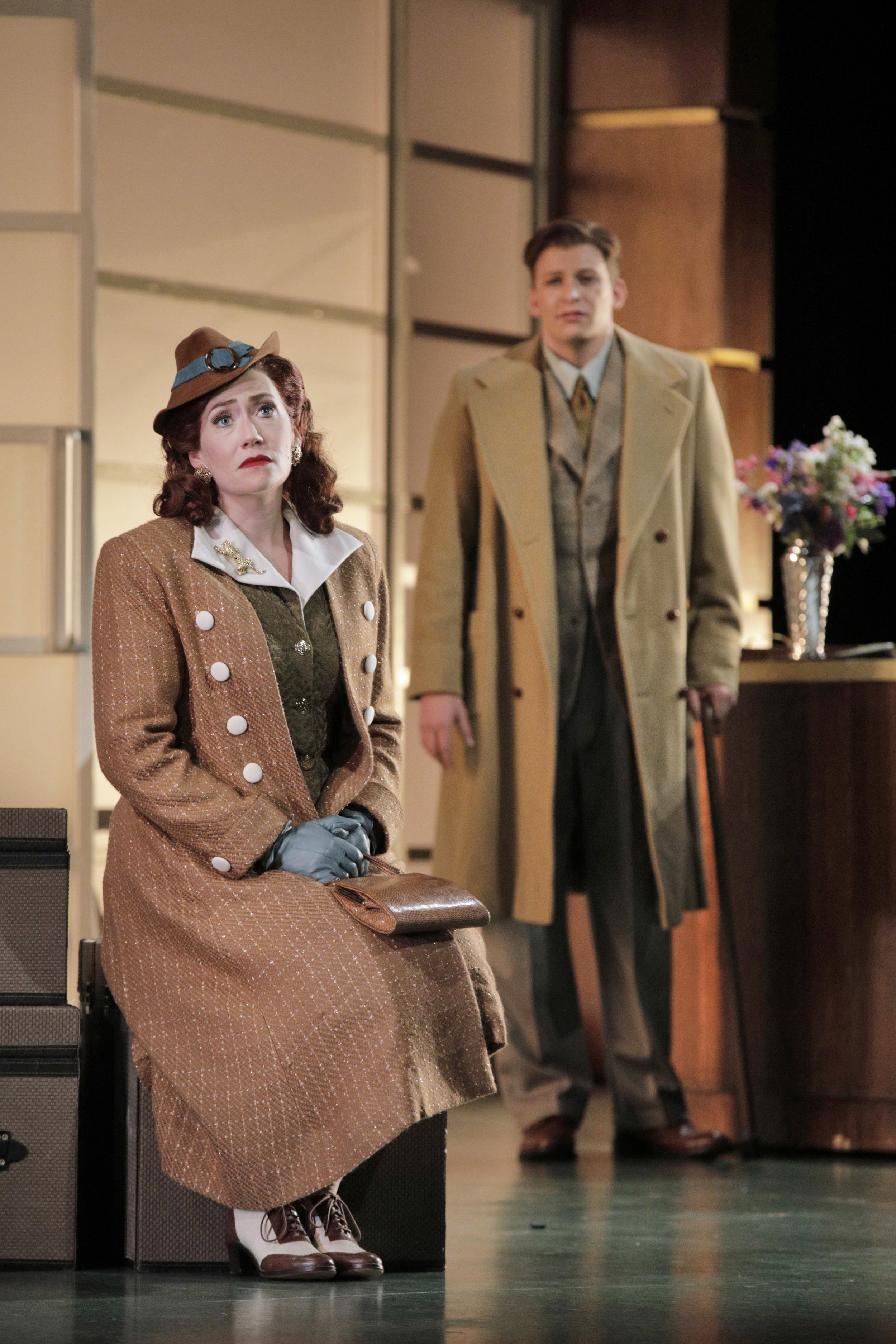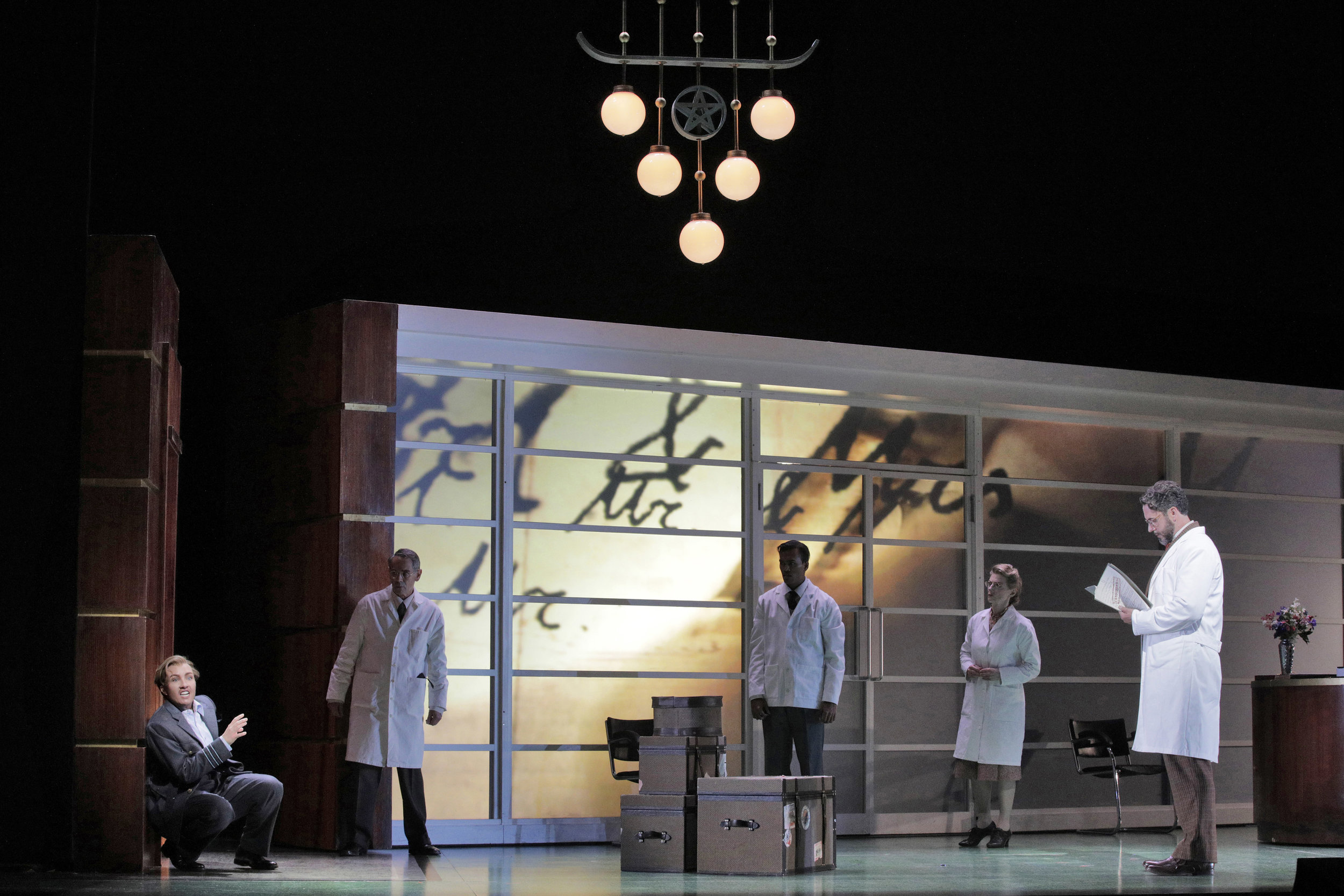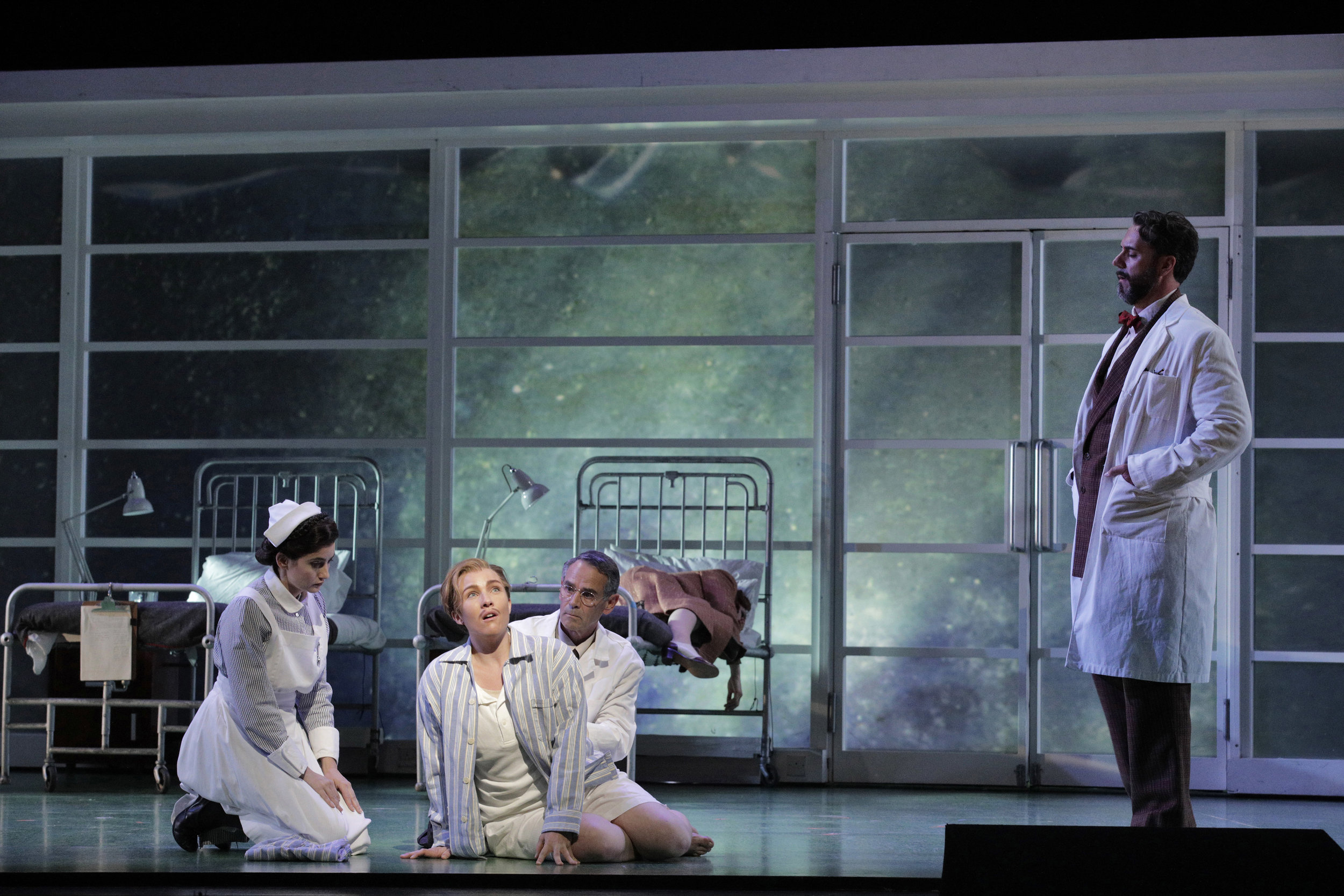Handel's 'Orlando' in San Francisco, Three Hours of Operatic Magic
/By Truman C. Wang
6/17/2019
Photo credit: Cory Weaver / San Francisco Opera
San Francisco Opera’s updated staging of Handel’s Orlando can be summed up in two words: Operatic Magic. Harry Fehr’s production, set in the psychiatric ward of a London military hostpital during the Blitz in World War II, has a chic vintage look evoking the classic British films of the 1940’s (think “Brief Encounter”). The magical events in Handel’s original libretto are still there, but as miracles of modern science (victims of arson, asphyxiation, and PTSD all restored back to health.) And then there’s the magic of Handel’s music – ravishing to the ear, rich in drama, rewarding for repeated hearings.
The plot of the opera centers on lovers Angelica and Medoro, who are involuntarily wrapped up in two love triangles: Orlando is in love with Angelica, and Dorinda with Medoro. The resolution and disentanglement of the love triangles are adroitly accomplished by the deus ex machina character of Zoroastro (a magician in the libretto, a psychiatrist in this production). Convoluted as the story might be, it provides a steady stream of inspirations for Handel’s arias, duets and even a trio – many of which are irregular and truncated to reflect the perilous mental states of the characters who sing them. The Act 3 duet for Orlando and Dorinda, “Unisca amor in noi”, is ingeniously structured like a da capo aria, in which Dorinda sings the B section.
Mezzo-soprano Sasha Cooke, an accomplished concert artist, is also a veteran of the stage, portraying the jealous, love-crazed warrior Orlando in all its horror and agony. This challenging role, originally written for the celebrated contralto castrato Senesino, holds no terror for Ms. Cooke, who dispatches Orlando’s Act 1 bravura aria “Fammi combattere” with fiery brilliance. The famous Act 2 Mad Scene (starting from “Ah! Stigie larve…”) in which Orlando hallucinates he has died and gone to hell, shows Ms. Cooke navigating a wide range of emotions, from rage to pity, among a frenzied array of arioso, aria and accompanied recitative. It’s a dramatic tour de force as fine as anything I’ve heard on an operatic stage.
Soprano Heidi Stober and countertenor Aryeh Nussbaum, as the two star-crossed lovers Angelica and Medoro, look suave in Yannis Thavoris’ period costumes and each gets to sing a tender farewell to the forest from which they must depart (“Verdi allori” and “Verdi piante” with rustic recorder obbligato). The role of Angelica is, in my opinion, one of Handel’s finest creations. Her first two arias in Act 1, both without a da capo, sound dangerously modern like a two-part aria of Mozart. The two arias that she sings to Orlando ("Se fedel vuoi ch'io ti creda", "Non potrà dirmi ingrata") and their Act 3 ‘mad duet’ ("Finché prendi ancora") convey a mixture of pity and defiance, all delivered convincingly by Ms. Stober.
In her American operatic debut, Austrian soprano Christina Gansch as Dorinda (a shepherdess in the libretto, a nurse in this production) steals every scene she’s in with her perky delivery of recitatives and natural flair for comedy. A light coloratura-soprano with clear, bright high notes, Ms. Gansch beguiled the audience with her nightingale imitation in “Quando spieghi tuoi tormenti" and brought down the house with a hilariously campy "Amore è qual vento" in Act 3, in which Dorinda, confused by love, throws a small tantrum with rapid burst of coloratura.
As ‘Doctor Miracle’, bass-baritone Christian Van Horn gets to sing two bravura arias in Acts 1 and 3, and a solemn one in Act 2 (à la Mozart’s Sarastro in Magic Flute). His powerful and passionate singing actually make these hospital visits not only tolerable but enjoyable.
The score of Orlando is essentially presented complete, apart from a couple of shortened arias and libretto changes to reflect the updated setting. Three hours flew by, in part thanks to conductor Christopher Moulds’ brisk tempi and his affinity to the dance rhythms in Handel’s music. The excellent forty-piece orchestra includes two recorders and a theorbo (a long-necked baroque guitar).
This production is a busy one, teeming with activities of hospital workers performing historically authentic chores in the background during and in between the musical numbers, as well as quick changing of hospital rooms from OR to ICU to a waiting room.
Video projection is a new trend in opera today, the best of which can add a new dramatic dimension outside of words and music. Andrzej Goulding’s work in Orlando greatly enhances the drama, showing the hero’s symptoms of psychosis during the Mad Scene (a rapid montage of disjointed flashback images) and during the attempted murder of Angelica in Act 3 (bomb drops and explosions during the Blitz). In Act 1, the doctor shows the lovesick Orlando a film of King Edwar VIII’s abdication in 1936, warning him not to choose love over duty. Another unexpected bonus of the modern updating is that the many Greek mythology references make our hero Orlando appear even more strange and unhinged. The English supertitles do an excellent job of clarifying the actions for those who didn’t read (or gave up reading) the synopsis beforehand.
Three more chances to experience the Handel magic on June 18, 21 and 27.
Truman C. Wang is Editor-in-Chief of Classical Voice, whose articles have appeared in the Pasadena Star-News, San Gabriel Valley Tribune, other Southern California publications, as well as the Hawaiian Chinese Daily. He studied Integrative Biology and Music at U.C. Berkeley.


